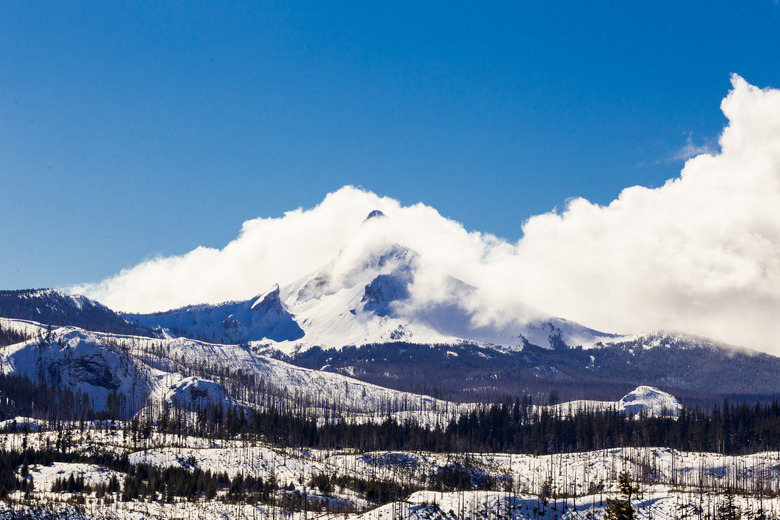Physical Features Of The Northeast
The northeastern United States — the New England states of Connecticut, Rhode Island, Massachusetts, New Hampshire, Vermont, Maine and New York — is home to striking natural beauty. Composing it are massive, bald-topped mountains, lush lowland forests, rocky storm-wracked coasts and everything from tiny wintergreen herbs to titanic moose. Its physical features represent vast scales of time, from the ancient crystalline heart of North America to freshly laid beach sand.
Atlantic Coastal Plain
Atlantic Coastal Plain
A sliver of the Atlantic Coastal Plain reaches the Northeast in the form of the "Outer Lands" archipelago off the New York, Massachusetts and Rhode Island coasts. These islands belong to that northerly region of the coastal plain called the Embayed Section, named for the prevalence of drowned river valleys, represented by estuaries and bays, which break up the coastline. The Outer Lands — the major components of which are Long Island, Block Island, Nantucket, the Elizabeth Islands, Martha's Vineyard and Cape Cod — are mostly composed of glacial deposits from the Laurentide Ice Sheet, which swamped the region in Pleistocene time.
The Appalachian Mountains
The Appalachian Mountains
Most of the Northeast belongs to the Appalachians, which commence in Atlantic Canada and arc southwestward all the way to northern Alabama. Here the range is mainly divided into the New England, Appalachian Plateaus and Valley-and-Ridge provinces, with a small section of the Piedmont reaching southeastern New York. The Appalachians, heavily weathered and fairly low in their present form, are the remnants of once-towering mountains thrust up during tectonic collisions mainly between about 250 and 400 million years ago. While the chain crests in the Southern Appalachians of Tennessee and North Carolina, the Northeast still claims some of its most impressive peaks, particularly in the Presidential Range of New Hampshire's White Mountains and lone Mount Katahdin in central Maine.
The Adirondacks
The Adirondacks
Bordered by the Appalachians on the south, east and northeast — and closely related to them ecologically — the Adirondack Mountains of northern New York are actually a distinct geological province. They represent a stateside portion of the Canadian Shield, a rough upland covering most of central and eastern Canada made up of the Precambrian bedrock of North America's continental core. The Adirondacks form a dome of rugged mountains that culminate in the High Peaks, crowned by 1,629-meter (5,344-foot) Mount Marcy.
Natural Communities
Natural Communities
A rich spectrum of temperate and near-boreal forests define much of the Northeast's ecological landscape. Oak-hickory woods in the southern and coastal regions merge with more northerly mixed-hardwood communities dominated by sugar maple and American beech. Spruce-fir forests with boreal affiliations occupy Appalachian and Adirondack high country and northern Maine. Within that broad-stroked palette are many unique ecosystems, including the maritime forests and salt marshes of the Outer Lands and the alpine heath and tundra of the highest, severest mountaintops.
Cite This Article
MLA
Shaw, Ethan. "Physical Features Of The Northeast" sciencing.com, https://www.sciencing.com/physical-features-northeast-9226/. 23 April 2018.
APA
Shaw, Ethan. (2018, April 23). Physical Features Of The Northeast. sciencing.com. Retrieved from https://www.sciencing.com/physical-features-northeast-9226/
Chicago
Shaw, Ethan. Physical Features Of The Northeast last modified March 24, 2022. https://www.sciencing.com/physical-features-northeast-9226/
